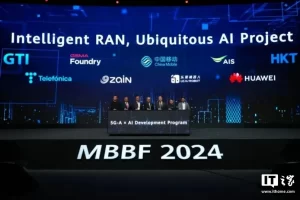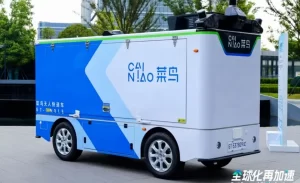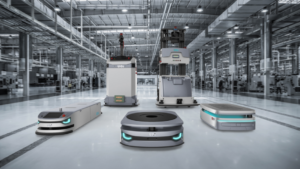Tactile sensors, as essential components in humanoid robots, serve multiple purposes, including environmental perception, object recognition, and assistance in executing tasks. Broadly defined, tactile sensing encompasses force, pressure, slip, and temperature detection. These sensors can monitor a robot’s interactions with its environment and detect various physical properties of objects, such as shape, stiffness, and softness. This article provides an overview of nearly 20 tactile sensor companies worldwide. (The following companies are listed in no particular order.)
Huaweike
Wuhan Huaweike Intelligent Technology Co., Ltd., founded in 2011, originated from Huazhong University of Science and Technology and was established by Academician Xiong Youlun from the Chinese Academy of Sciences. The company aims to become a global leader in smart sensing products and solutions. Its small-batch products include dexterous fingertip tactile sensors, electronic skins, and smart feet, widely used in humanoid robots and medical devices, with collaborations with several leading domestic enterprises.

Tashan
Founded in 2017, Tashan focuses on AI tactile sensing chips and application solutions, backed by research teams from Tsinghua University and the University of Manchester. The company has filed 172 patents, including 40 core patents related to humanoid robots. Tashan developed the world’s first mixed-signal AI haptic chip, which is used in fingertip tactile sensors and electronic skins. It has partnerships with renowned companies like Xiaomi, Mercedes-Benz, and BMW.

Hanwei Electronics
Hanwei Electronics provides an integrated solution centered on sensors, covering the Internet of Things (IoT), public utilities, and health management. Its products are widely applied in emerging sectors like consumer electronics, medical devices, and IoT.

PaXiniTech
With core technology from the robotics lab at Waseda University in Japan, PaXiniTech specializes in multidimensional tactile technology, developing high-sensitivity tactile sensors with skin-like properties. Its product lines include tactile sensor modules, robot joint modules, and humanoid robots.
SUSHI TESTING
As a leading provider of environmental and reliability testing equipment and services in China, SUSHI TESTING is a frontrunner in the vibration monitoring field. Its graphene-based flexible stress and vibration sensors are applied in fields such as aerospace, machinery, and bridges and are used as electronic skin in robotics, wearables, and smart prosthetics.
Hongxin Electronics
Hongxin Electronics focuses on flexible printed circuit boards (FPCs) and has accumulated expertise in flexible electronic skin through its flexible electronics research institute. Its subsidiary, Ruihu Technology, has extensive experience in flexible pressure sensors, with applications in consumer electronics and smart home technologies, showing potential for use in robotic hands and skin.
LEGACT
LEGACT offers force-sensing solutions by integrating sensors, software, and algorithms across consumer electronics and healthcare. The company provides not only sensors and modules but also data collection, algorithm development, and data visualization services, establishing a comprehensive advantage in force-sensing technology.
Matrix Innovation
Matrix Innovation specializes in tactile sensors, providing adaptable flexible pressure sensor solutions. Its core team members previously worked with DJI and contributed to several DJI product developments. After years of technical breakthroughs, the team successfully mass-produced sensors with decoupled functionality and reliability, bringing tactile sensors into consumer electronics, smart home, medical health, and IoT, enhancing user experiences in consumer products.
Xense Robotics
Xense Robotics, established in May 2024 and headquartered in Shanghai, focuses on multimodal tactile perception and intelligent technology for precise robotic operations. The founder, Dr. Ma Daolin, holds a PhD from Peking University in theoretical and applied mechanics and completed postdoctoral research on robotic manipulation and tactile perception at MIT’s Mcube lab. Recently, the company raised tens of millions of yuan in angel funding, which will be used for product development, market expansion, and talent recruitment.
Phlexsense
Phlexsense, focusing on novel microstructured flexible tactile sensor technology, relies on research from the Changchun Institute of Applied Chemistry, Chinese Academy of Sciences, with support from the Huangpu Materials Research Institute. Phlexsense has overcome technical bottlenecks in materials, design, and manufacturing, enabling mass production and creating vast potential for applications in the new flexible sensor field.
New Degree Technology (NDT)
Founded in 2011 as a Sino-foreign joint venture, NDT focuses on pressure-sensitive touch technology and offers integrated force-sensing touch solutions. Its robot tactile sensors, based on piezoresistive principles, detect the magnitude and position of forces through slight sensor deformation and Wheatstone bridge differential signal output. NDT’s tactile sensors, known for high sensitivity, easy installation, and durability, are widely used in robotics.

Tekscan
Tekscan is an industry leader in thin-film interface pressure mapping and force sensing technology, offering a wide range of sensor products that measure force or interface pressure between nearly any two surfaces. The company’s product line includes force sensors, position sensors, dental sensors, pressure indication films, and pressure mapping systems for industrial and biomechanics applications, helping customers optimize product designs and enhance clinical and research outcomes.

Pressure Profile Systems
Specializing in haptic measurement and mapping technology, Pressure Profile Systems offers various sensor systems for healthcare, robotics, consumer products, and education. Products include FingerTPS for quantifying human touch, TactArray for pressure distribution mapping on diverse objects, Chameleon wearable pressure sensor gloves for robotics, VR, and gaming, and Esophagram, a pressure sensing system for esophageal function evaluation.
XELA Robotics
A subsidiary of Waseda University, XELA Robotics focuses on 3D tactile sensors and electronic skin for dexterous humanoid robot hands. It provides complete solutions, including sensors, dexterous hand modules, software, and algorithms. The core product line, uSkin series, includes high-density three-axis tactile sensors with a thin, flexible, and durable design that minimizes wiring requirements, enabling robots to sense object shape, texture, and temperature.

Novasentis
Novasentis is dedicated to developing thin-film tactile sensors, widely used in augmented reality (AR/VR), wearable devices, sports training equipment, and gaming controllers. These thin-film sensors are known for their sensitivity and flexibility.
Syntouch
With a strong presence in tactile sensor technology, Syntouch’s products and services are applied across robotics, prosthetics, and consumer product testing. The company is a leader in sensors that mimic human touch, enhancing robots’ and prosthetics’ perception capabilities.
JDI
Primarily producing proximity sensors and capacitive fingerprint sensors for screens, JDI’s tactile sensors help robotic hands or contact areas perceive the environment and respond intelligently, enhancing robot flexibility and precision.
GelSight
Founded by researchers from MIT, GelSight specializes in high-resolution tactile imaging technology, capturing detailed surface data using gel-based materials. Its sensors, applied in robotics, quality control, and material testing, allow robots to “see” surface textures, especially suitable for industries requiring precise surface measurements.
Conclusion: As a crucial technology in humanoid robots and other smart devices, tactile sensors are rapidly advancing in various application scenarios. Numerous global companies are innovating in this field, offering diverse solutions. As artificial intelligence and robotics technology continue to progress, tactile sensors will further improve in sensing accuracy, sensitivity, and reliability, expanding their application range and driving market demand. The future for tactile sensors holds immense potential and is worth ongoing attention.










